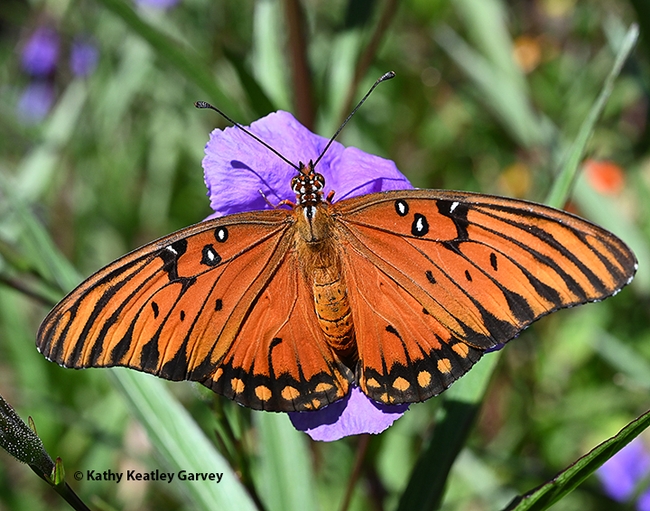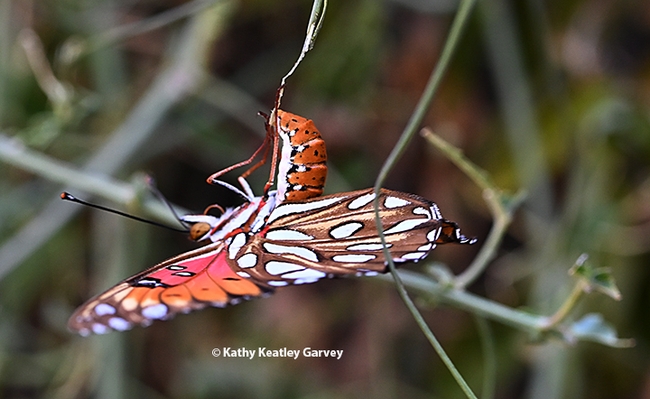- Author: Kathy Keatley Garvey
The Gulf Fritillary, Agraulis vanillae, and the Mexican sunflower, Tithonia rotundifola, seem made for one another.
Both are a showy orange. Both are show-stoppers. And both attract a photographer's eye.
Especially when a Gulf Frit flutters over a Tithonia on a warm sunny day in a Vacaville garden.
A shutter speed of 1/5000 of a second (Nikon D500 with a 200mm lens) stopped the action.
"This dazzling bit of the New World Tropics was introduced into southern California in the 19th Century--we don't know how--and was first recorded in the Bay Area before 1908, though it seems to have become established there only in the 1950s," writes butterfly guru Art Shapiro, UC Davis distinguished professor emeritus, on his website, Art's Butterfly World. "It can be quite common in the East and South Bay --particularly in Berkeley-- and has been found breeding spontaneously as far inland as Fairfield where, however, it is not established."
Shapiro, who has monitored butterfly populations in Central California since 1972, continues: "There are scattered records in the Central Valley and even up to Folsom, perhaps resulting from people breeding the species for amusement or to release at social occasions. According to Hal Michael, who grew up in South Sacramento, this species bred there in abundance on garden Passiflora in the early 1960s. It seems to have died out by the early 1970s, however. Intolerant of hard freezes, it still managed to survive the record cold snap of 1990 that largely exterminated the Buckeye regionally!"
"This butterfly has no native host plant in California and is entirely dependent on introduced species of the tropical genus Passiflora (Passion Flower, Passion Vine), including the common Maypop (P. incarnata) and P. X alatocaerulea. However, it will not eat all of the Passiflora in cultivation in California."
"In the Bay Area this species can be seen flying any day of the year, if it is warm and sunny enough."
On this day in Vacaville, it was indeed warm and sunny enough: 100 degrees.
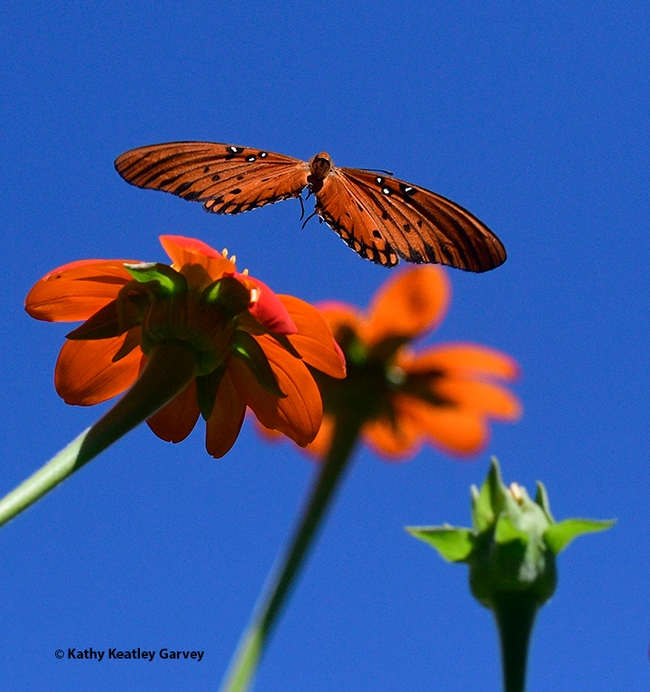
- Author: Kathy Keatley Garvey
Ever seen a honey bee and a butterfly sharing a lavender blossom?
Just in time for National Pollinator Week, June 17-23, we saw this today.
What could be more pollinator friendly than that?
The honey bee, Apis mellifera, and the Gulf Fritillary, Agraulis vanillae, meet on many a blossom. The butterfly usually flutters away, departing first.
This time the bee left first.
As Pollinator Partnership says on its website:
"Pollinator Week 2024 is a celebration of the vital role that pollinators play in our ecosystems, economies, and agriculture. Under the inspiring theme Vision 2040: Thriving Ecosystems, Economies, and Agriculture, this year's event urges us to envision a future where pollinators not only survive but thrive. These essential creatures, including bees, butterflies, moths, bats, beetles, and hummingbirds, are the unsung heroes behind the food we enjoy and the beauty that surrounds us. As we reflect on the interconnectedness of our world, let's unite in a collective effort to protect and preserve these crucial pollinators. By understanding the impact of our actions on their habitats and embracing sustainable practices, we can pave the way for a flourishing future..."
The bee and the butterfly would agree--if they could agree.
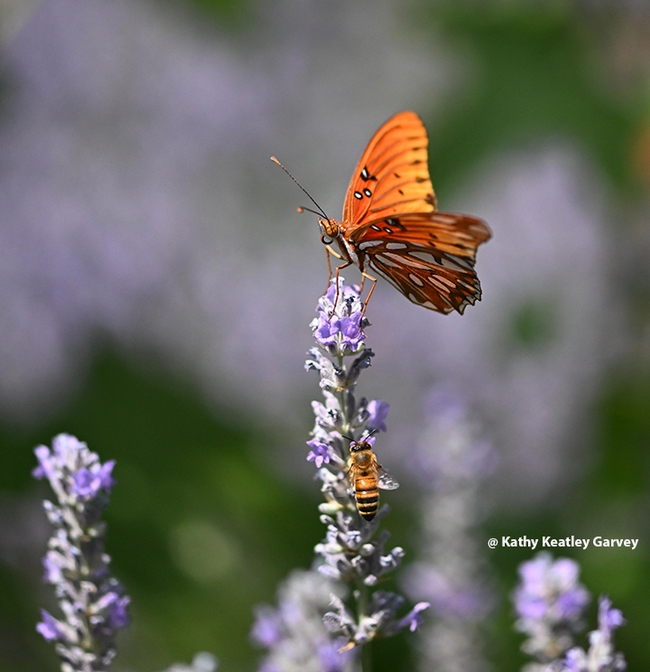
- Author: Kathy Keatley Garvey
The Gulf Fritillary, Agraulis vanillae, is definitely back from a comeback, at least in the Sacramento, Davis and Vacaville-Fairfield areas.
In September of 2009, butterfly guru Art Shapiro, now a UC Davis distinguished professor emeritus, excitedly announced the re-appearance of the Gulf Fritillary butterfly in the Sacramento metropolitan area after a four-decade absence, and in the Davis area after a 30-year absence.
The showy butterfly colonized both south Sacramento and the Winding Way/Auburn Boulevard area in the 1960s but by 1971 "apparently became extinct or nearly so," recalled Shapiro, who has monitored the butterfly populations of central California since 1972 and maintains a research website at https://butterfly.ucdavis.edu.
It's a tropical and subtropical butterfly with a range that extends from the southern United States all the way to central Argentina.
No one knows exactly when the first Gulf Frit first arrived in California, but "it was already in the San Diego area by about 1875, Shapiro says, and it was first recorded in the San Francisco Bay Area around 1908.
A recent piece in The Acorn, published by the Effie Yeaw Nature Center, Carmichael, and authored by UC Davis entomologist Mary Louise Flint (see article), indicated the Gulf Fritillary is doing well in the area.
Good news!
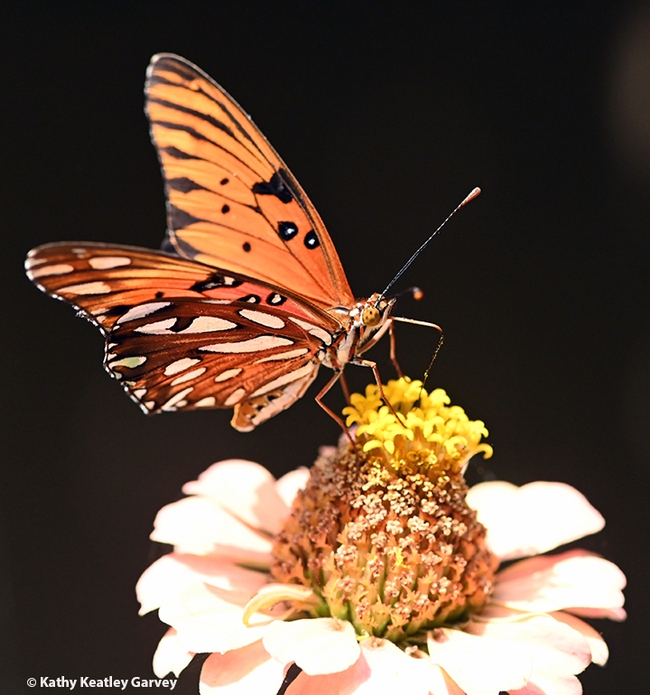
- Author: Kathy Keatley Garvey
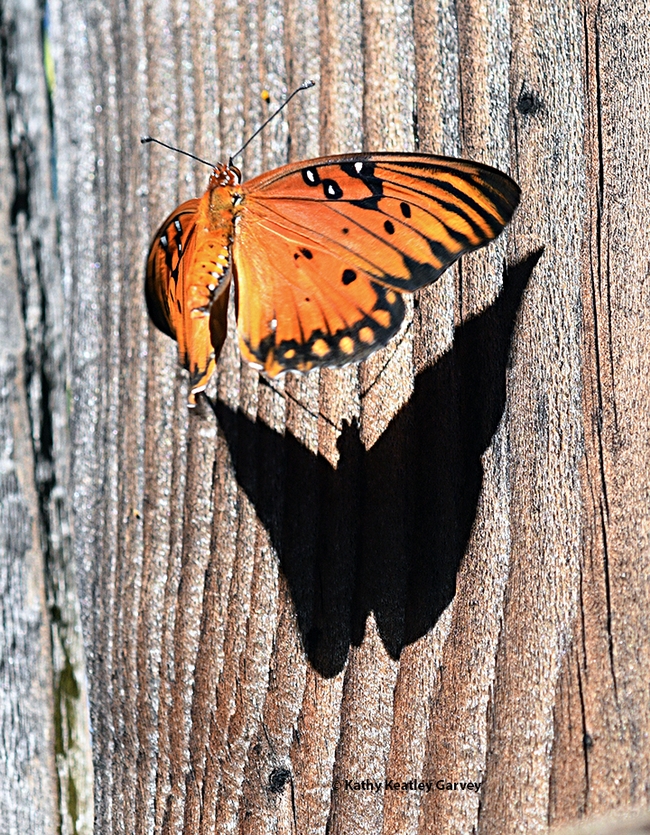
The shadow knows, but what does it know?
It knows to follow.
It follows the Gulf Fritillary--a brightly colored orange and black butterfly with silver-spangled wings--up a fence in Vacaville, Calif., and vanishes.
That's what butterflies and shadows do--they vanish.
If you're growing passionflower vine (Passiflora), you've probably photographed the Agraulis vanillae egg, the caterpillar, the chrysalis and the adult.
But its shadow?
Have you photographed its shadow, that dark silhouette intercepting rays of light?
The shadow knows, but what does it know?
It knows to follow.
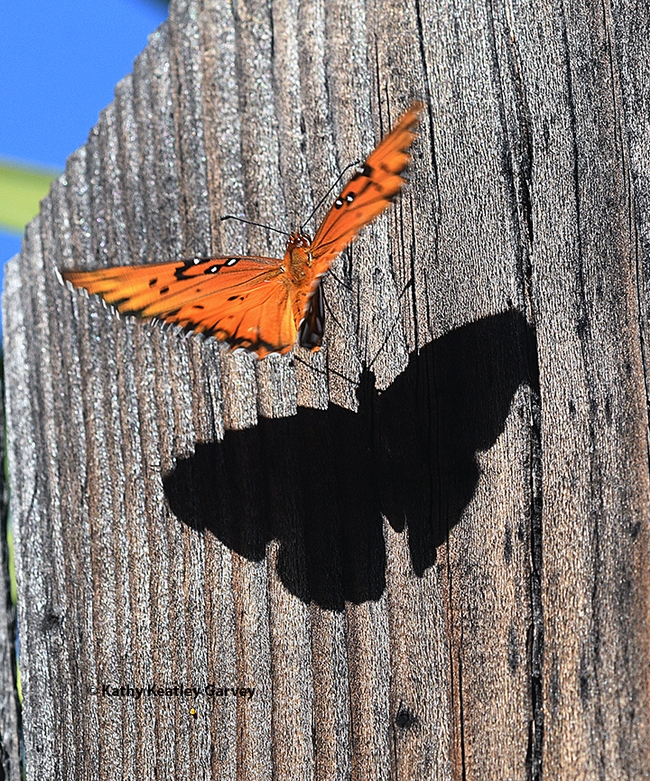
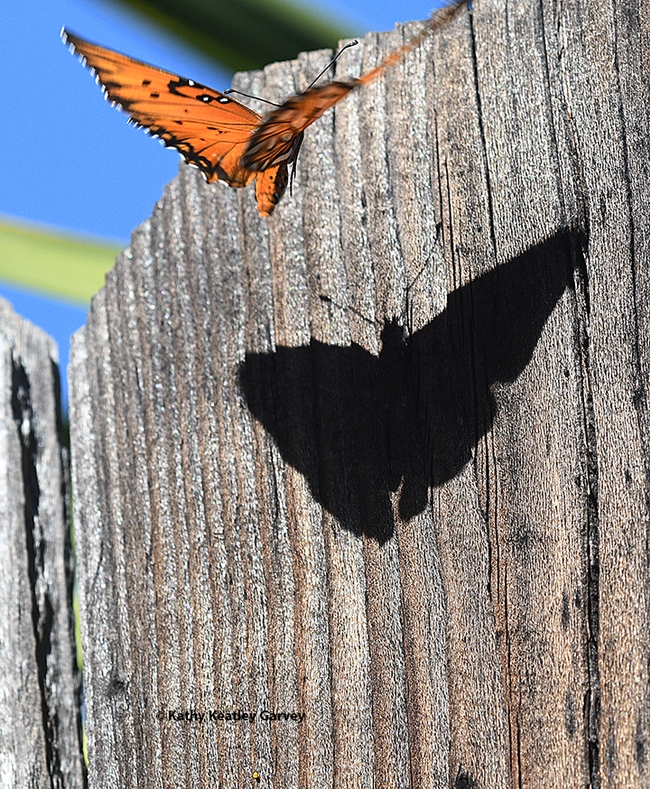
- Author: Kathy Keatley Garvey
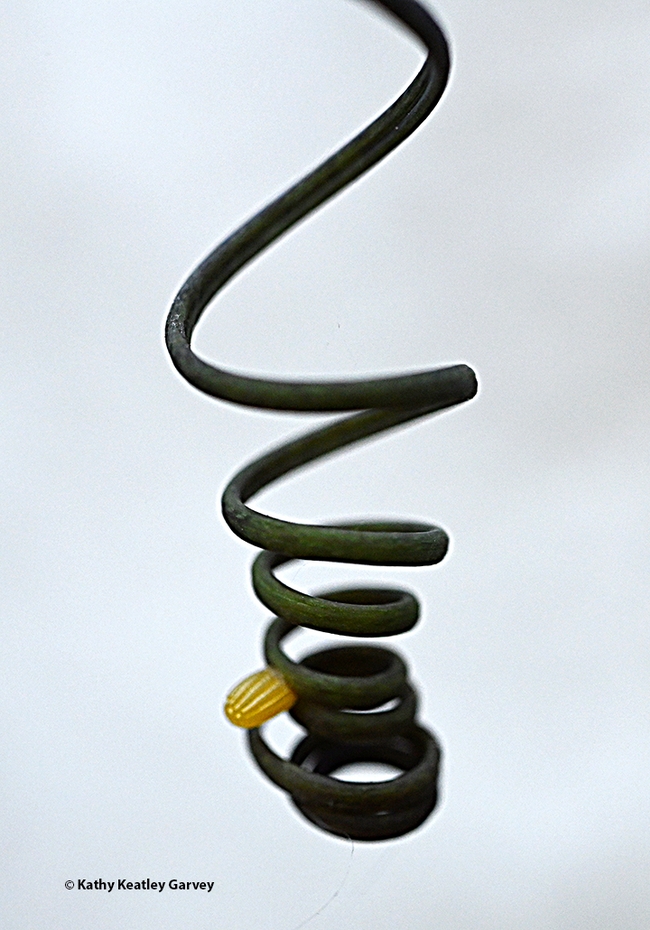
The Gulf Frit, or "passion butterfly" (Agraulis vanillae), lays her tiny, yellow eggs, singly, on her host plant, the passionflower vine (Passiflora).
The egg? It's about the size of a pin head. Look closely and you'll see it's ridged like the raised lines of sand or a miniature ear of corn.
Often a Gulf Frit will deposit her egg on a tendril, which looks like a cork screw gone ballistic. Sometimes she'll lay her egg on a leaf, a bud, a stem or a nearby wall, gate or fence. Mama, how can we find our way?
We've grown Passiflora in our garden in Vacaville for decades. Some seasons the 'cats will skeletonize the plant, eating everything--from the leaves and blossoms right down to the stems.
Some gardeners refuse to plant the passionflower vine because a stripped plant makes them look like "a bad gardener." They have been known to pluck off the hungry 'cats to "save" the plant.
We let nature take its course. Butterflies mate, eggs hatch, caterpillars crawl, chrysalises form, and the cycle starts all over again. An egg is the promise of a new generation.
Last year the predators, including California scrub jays, praying mantises, spiders, yellowjackets and European paper wasps, grabbed their share of the 'cats.
This season, no. The scrub jays have, for the most part, vanished. Hey, look at that hawk circling our yard! The praying mantises are gone. And we haven't seen a yellowjacket, European paper wasp or spider for weeks.
It's a good year for the Gulf Frits! And a bad year for the passionflower vine... It is about to be skeletonized.
